-
 Bitcoin
Bitcoin $83,722.4899
-2.34% -
 Ethereum
Ethereum $1,571.8109
-4.15% -
 Tether USDt
Tether USDt $1.0001
0.02% -
 XRP
XRP $2.0738
-4.14% -
 BNB
BNB $578.7753
-1.84% -
 Solana
Solana $125.0081
-5.57% -
 USDC
USDC $1.0001
0.02% -
 TRON
TRON $0.2539
0.76% -
 Dogecoin
Dogecoin $0.1535
-3.82% -
 Cardano
Cardano $0.6057
-5.84% -
 UNUS SED LEO
UNUS SED LEO $9.3958
-0.37% -
 Chainlink
Chainlink $12.1796
-3.98% -
 Avalanche
Avalanche $18.8252
-5.99% -
 Stellar
Stellar $0.2336
-3.94% -
 Toncoin
Toncoin $2.8503
-4.23% -
 Shiba Inu
Shiba Inu $0.0...01161
-2.86% -
 Sui
Sui $2.0849
-5.88% -
 Hedera
Hedera $0.1576
-5.78% -
 Bitcoin Cash
Bitcoin Cash $320.2269
-3.76% -
 Litecoin
Litecoin $75.8543
-2.64% -
 Polkadot
Polkadot $3.5213
-5.14% -
 Dai
Dai $1.0001
0.01% -
 Bitget Token
Bitget Token $4.2699
-1.07% -
 Hyperliquid
Hyperliquid $15.0314
-8.46% -
 Ethena USDe
Ethena USDe $0.9992
0.01% -
 Pi
Pi $0.6305
-14.83% -
 Monero
Monero $218.8124
2.12% -
 Uniswap
Uniswap $5.1492
-4.68% -
 OKB
OKB $52.3056
0.11% -
 Pepe
Pepe $0.0...07110
-4.14%
What is the storage proof mechanism of Filecoin mining?
Filecoin's storage proof mechanism uses PoRep and PoSt to ensure data integrity, rewarding miners with FIL for valid proofs while penalizing invalid ones.
Apr 15, 2025 at 02:21 am
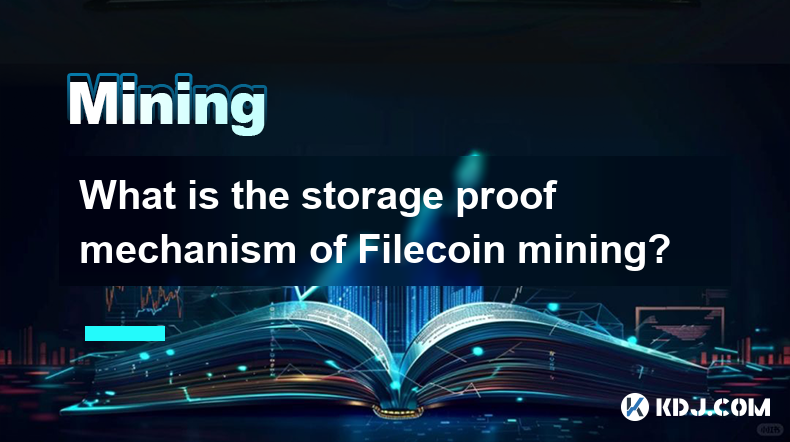
Filecoin is a decentralized storage network that leverages blockchain technology to enable users to store, retrieve, and transfer data in a secure and efficient manner. One of the key components of the Filecoin network is its mining process, which involves miners providing storage space and proving that they are indeed storing the data they claim to be storing. This is achieved through the storage proof mechanism, which is essential for maintaining the integrity and reliability of the network.
Understanding the Basics of Filecoin Mining
Filecoin mining involves miners offering their storage capacity to the network. In return, they are rewarded with Filecoin (FIL), the native cryptocurrency of the Filecoin network. To ensure that miners are actually storing the data they claim, the network employs a sophisticated storage proof mechanism. This mechanism is crucial for verifying the integrity of the stored data and ensuring that miners are fulfilling their obligations.
The Role of Storage Proofs in Filecoin
Storage proofs are cryptographic proofs that miners generate to demonstrate that they are storing the data as agreed upon. These proofs are essential for the network to verify that the data is being held correctly and that miners are not cheating the system. The storage proof mechanism in Filecoin is designed to be both efficient and secure, ensuring that the network can trust the miners to store data reliably.
How Filecoin's Storage Proof Mechanism Works
The storage proof mechanism in Filecoin operates through a process known as Proof of Replication (PoRep) and Proof of Spacetime (PoSt). These two components work together to ensure that miners are storing data correctly and continuously.
Proof of Replication (PoRep): This is the initial proof that a miner generates when they first store a piece of data. PoRep ensures that the data is uniquely stored and not duplicated across multiple storage locations. It involves creating a unique encoding of the data that can be verified by the network.
Proof of Spacetime (PoSt): After the initial storage, miners must periodically generate PoSt to prove that they are still storing the data over time. PoSt involves generating proofs at regular intervals to demonstrate that the data has not been tampered with or deleted.
The Process of Generating Storage Proofs
Generating storage proofs in Filecoin involves several steps that miners must follow meticulously. Here is a detailed breakdown of the process:
Initial Data Storage: When a miner agrees to store a piece of data, they first encode the data using a unique encoding scheme. This is the first step in generating the Proof of Replication.
Generating PoRep: The miner then generates the PoRep, which involves creating a cryptographic proof that the data is stored uniquely. This proof is submitted to the Filecoin network for verification.
Periodic PoSt Generation: After the initial storage, the miner must generate Proof of Spacetime at regular intervals. This involves creating a new proof that demonstrates the data is still being stored correctly.
Verification by the Network: The Filecoin network verifies both the PoRep and PoSt proofs. If the proofs are valid, the miner is rewarded with FIL. If the proofs are invalid, the miner may face penalties, including loss of rewards and potential exclusion from the network.
The Importance of Efficient Storage Proofs
Efficient storage proofs are crucial for the scalability and performance of the Filecoin network. The storage proof mechanism must be designed to handle large volumes of data and numerous miners without compromising on security or speed. Filecoin's use of advanced cryptographic techniques ensures that the proofs are both secure and efficient, allowing the network to scale effectively.
Challenges and Solutions in Storage Proofs
Implementing a robust storage proof mechanism comes with its own set of challenges. One of the main challenges is ensuring that the proofs are verifiable without requiring excessive computational resources. Filecoin addresses this challenge through the use of zero-knowledge proofs, which allow the network to verify the proofs without needing to access the actual data.
Another challenge is preventing miners from colluding to generate false proofs. Filecoin mitigates this risk through a combination of randomized challenges and penalties for invalid proofs. By regularly challenging miners to generate proofs and imposing strict penalties for non-compliance, the network ensures that miners are incentivized to store data honestly.
The Impact of Storage Proofs on Filecoin's Security
The storage proof mechanism plays a critical role in ensuring the security of the Filecoin network. By requiring miners to generate verifiable proofs of data storage, the network can trust that the data is being stored correctly and securely. This not only enhances the reliability of the network but also protects users' data from potential breaches or losses.
Technical Details of Filecoin's Storage Proofs
To delve deeper into the technical aspects of Filecoin's storage proof mechanism, it's important to understand the specific algorithms and protocols used. Filecoin employs SNARKs (Succinct Non-Interactive Arguments of Knowledge) for generating and verifying proofs. SNARKs allow for the creation of compact proofs that can be verified quickly, making them ideal for a decentralized storage network.
The process of generating a Proof of Replication involves the following steps:
Encoding the Data: The data is encoded using a unique encoding scheme that ensures it is stored uniquely.
Generating the Proof: The miner generates a cryptographic proof that the data is stored correctly. This proof is based on the encoded data and is verifiable by the network.
Submitting the Proof: The proof is submitted to the Filecoin network, where it is verified using SNARKs.
Similarly, generating a Proof of Spacetime involves:
Periodic Proof Generation: At regular intervals, the miner generates a new proof that the data is still being stored correctly.
Verification: The network verifies the proof using SNARKs to ensure that the data has not been tampered with or deleted.
Frequently Asked Questions
Q: How does Filecoin ensure the integrity of stored data?
A: Filecoin ensures the integrity of stored data through its storage proof mechanism, which involves miners generating Proof of Replication and Proof of Spacetime. These proofs are verified by the network to ensure that the data is stored correctly and continuously.
Q: What happens if a miner fails to generate valid storage proofs?
A: If a miner fails to generate valid storage proofs, they may face penalties, including loss of rewards and potential exclusion from the network. This incentivizes miners to store data honestly and reliably.
Q: Can miners collude to generate false storage proofs?
A: Filecoin mitigates the risk of miners colluding to generate false storage proofs through randomized challenges and penalties for invalid proofs. By regularly challenging miners and imposing strict penalties, the network ensures that miners are incentivized to store data honestly.
Q: How does Filecoin use zero-knowledge proofs in its storage proof mechanism?
A: Filecoin uses zero-knowledge proofs to allow the network to verify storage proofs without needing to access the actual data. This enhances the efficiency and security of the storage proof mechanism, enabling the network to scale effectively.
Disclaimer:info@kdj.com
The information provided is not trading advice. kdj.com does not assume any responsibility for any investments made based on the information provided in this article. Cryptocurrencies are highly volatile and it is highly recommended that you invest with caution after thorough research!
If you believe that the content used on this website infringes your copyright, please contact us immediately (info@kdj.com) and we will delete it promptly.
- From Meme Coin to Serious Contender: Dogecoin (DOGE) Reaches a Market Cap of $750 Million
- 2025-04-16 18:20:13
- Semler Scientific Is Going All-In on Bitcoin With a $500M Securities Offering and a New Loan Agreement With Coinbase
- 2025-04-16 18:20:13
- The battle over digital freedom of expression and the adoption of Bitcoin
- 2025-04-16 18:15:13
- Upbit Lists WalletConnect (WCT) for Trading on KRW, BTC, and USDT Markets on April 16
- 2025-04-16 18:15:13
- Bitcoin (BTC) Prices Today Reflect Minor but Notable Losses
- 2025-04-16 18:10:13
- Tether Invests in Fizen, a Fintech Firm Focusing on Digital Asset Payments and Private Crypto Wallets
- 2025-04-16 18:10:13
Related knowledge
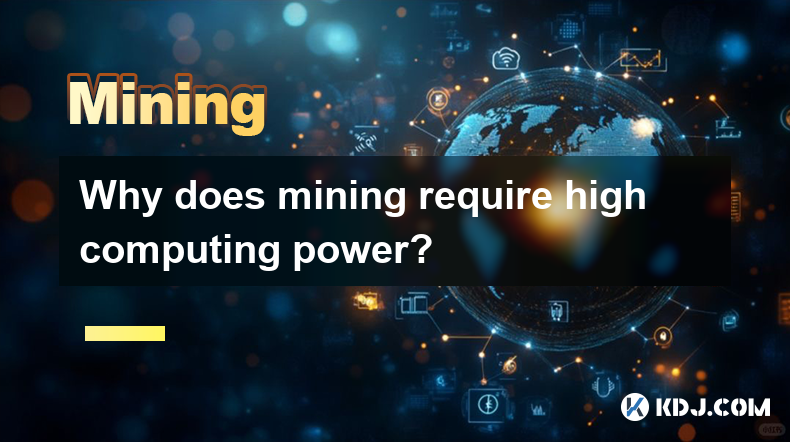
Why does mining require high computing power?
Apr 16,2025 at 12:07pm
Mining in the cryptocurrency world, particularly in the case of Bitcoin and other Proof of Work (PoW) cryptocurrencies, is a process that demands significant computational resources. This article delves into the reasons behind this high demand for computing power, exploring the technical intricacies and the underlying principles that necessitate such re...

How to evaluate the return on investment of mining?
Apr 16,2025 at 05:28pm
Mining in the cryptocurrency world refers to the process of verifying transactions and adding them to the blockchain, which in turn rewards miners with newly created coins. Evaluating the return on investment (ROI) of mining is crucial for miners to understand whether their operations are profitable. This article will delve into the various factors and ...
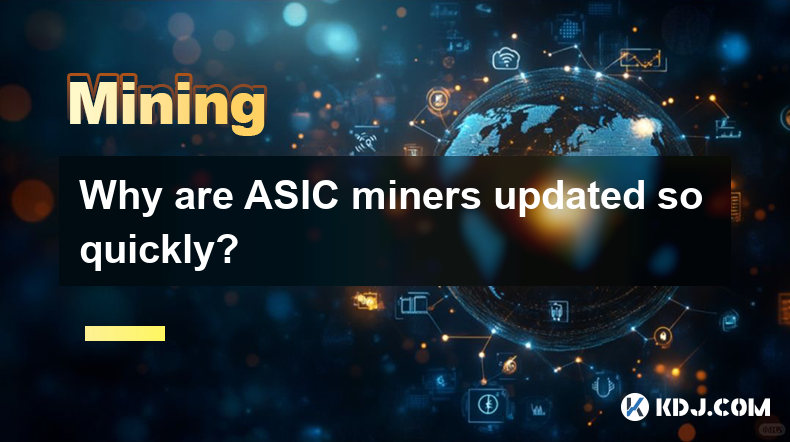
Why are ASIC miners updated so quickly?
Apr 16,2025 at 01:07pm
The rapid updates of ASIC miners in the cryptocurrency industry are driven by several key factors that contribute to their constant evolution and improvement. ASIC miners, or Application-Specific Integrated Circuit miners, are specialized hardware designed to mine specific cryptocurrencies with high efficiency. The primary reason for their frequent upda...
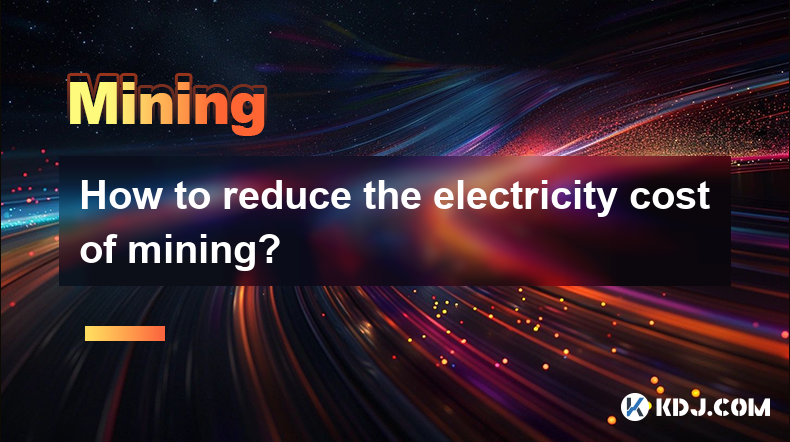
How to reduce the electricity cost of mining?
Apr 16,2025 at 08:42am
Mining cryptocurrencies, particularly Bitcoin, is an energy-intensive process that can lead to significant electricity costs. However, there are several strategies that miners can employ to reduce these expenses and make their operations more cost-effective. In this article, we will explore various methods to minimize the electricity cost of mining. Cho...
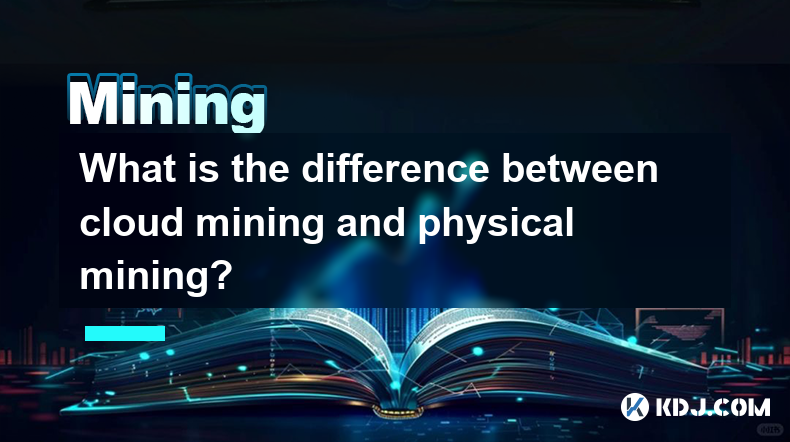
What is the difference between cloud mining and physical mining?
Apr 16,2025 at 01:49am
What is the difference between cloud mining and physical mining? In the world of cryptocurrencies, mining is the process by which new coins are generated and transactions are verified and added to the blockchain. There are two primary methods of mining: cloud mining and physical mining. Understanding the differences between these two approaches can help...
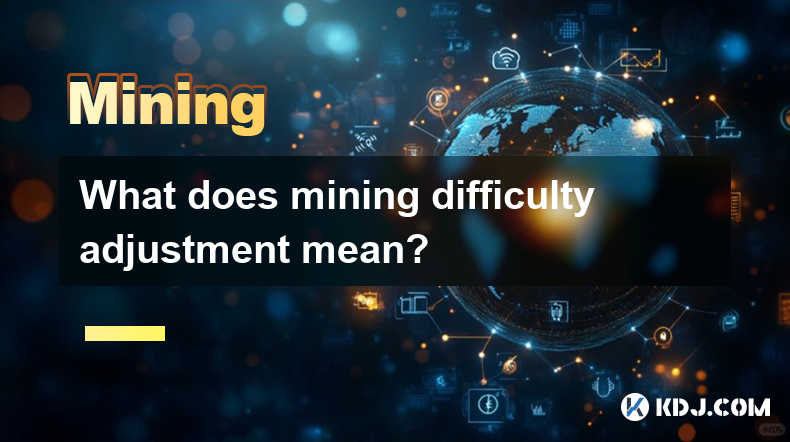
What does mining difficulty adjustment mean?
Apr 16,2025 at 12:42am
What does mining difficulty adjustment mean? Mining difficulty adjustment is a crucial mechanism in blockchain networks, particularly in Proof of Work (PoW) systems like Bitcoin. It ensures that the rate at which new blocks are added to the blockchain remains consistent, despite fluctuations in the total computational power (hash rate) of the network. T...

Why does mining require high computing power?
Apr 16,2025 at 12:07pm
Mining in the cryptocurrency world, particularly in the case of Bitcoin and other Proof of Work (PoW) cryptocurrencies, is a process that demands significant computational resources. This article delves into the reasons behind this high demand for computing power, exploring the technical intricacies and the underlying principles that necessitate such re...

How to evaluate the return on investment of mining?
Apr 16,2025 at 05:28pm
Mining in the cryptocurrency world refers to the process of verifying transactions and adding them to the blockchain, which in turn rewards miners with newly created coins. Evaluating the return on investment (ROI) of mining is crucial for miners to understand whether their operations are profitable. This article will delve into the various factors and ...

Why are ASIC miners updated so quickly?
Apr 16,2025 at 01:07pm
The rapid updates of ASIC miners in the cryptocurrency industry are driven by several key factors that contribute to their constant evolution and improvement. ASIC miners, or Application-Specific Integrated Circuit miners, are specialized hardware designed to mine specific cryptocurrencies with high efficiency. The primary reason for their frequent upda...

How to reduce the electricity cost of mining?
Apr 16,2025 at 08:42am
Mining cryptocurrencies, particularly Bitcoin, is an energy-intensive process that can lead to significant electricity costs. However, there are several strategies that miners can employ to reduce these expenses and make their operations more cost-effective. In this article, we will explore various methods to minimize the electricity cost of mining. Cho...

What is the difference between cloud mining and physical mining?
Apr 16,2025 at 01:49am
What is the difference between cloud mining and physical mining? In the world of cryptocurrencies, mining is the process by which new coins are generated and transactions are verified and added to the blockchain. There are two primary methods of mining: cloud mining and physical mining. Understanding the differences between these two approaches can help...

What does mining difficulty adjustment mean?
Apr 16,2025 at 12:42am
What does mining difficulty adjustment mean? Mining difficulty adjustment is a crucial mechanism in blockchain networks, particularly in Proof of Work (PoW) systems like Bitcoin. It ensures that the rate at which new blocks are added to the blockchain remains consistent, despite fluctuations in the total computational power (hash rate) of the network. T...
See all articles























































































